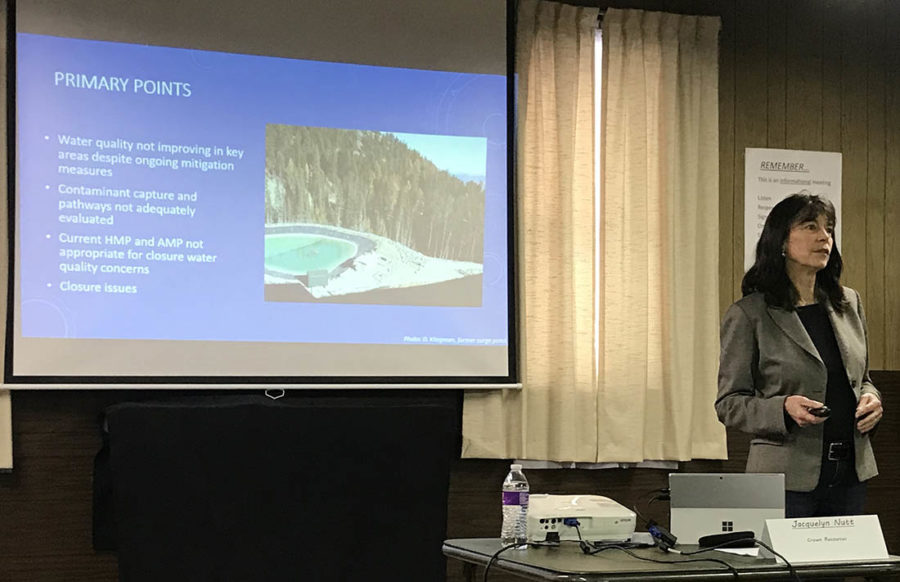Water Quality not improving at the Buckhorn Mine
Mine Seepage Exceeds Permit Limits; Violations Mount
 The 2018 Annual Coordination Meeting at the Buckhorn Mine included a presentation from Dr. Ann Maest, OHA’s consulting aqueous geochemist. Dr. Maest has worked on Buckhorn issues for 25 years and is an expert on the environmental impacts of mining, working on projects internationally. In contrast to the water quality presentation given by Crown Resources, Dr. Maest took a critical look at the previous year’s data. In her presentation, Dr. Maest concluded that, despite ongoing mitigation measures at the mine, water quality was not improving in key locations at the site. The presentation focused on the water quality impacts of two contaminants of concern: sulfate and nitrate.
The 2018 Annual Coordination Meeting at the Buckhorn Mine included a presentation from Dr. Ann Maest, OHA’s consulting aqueous geochemist. Dr. Maest has worked on Buckhorn issues for 25 years and is an expert on the environmental impacts of mining, working on projects internationally. In contrast to the water quality presentation given by Crown Resources, Dr. Maest took a critical look at the previous year’s data. In her presentation, Dr. Maest concluded that, despite ongoing mitigation measures at the mine, water quality was not improving in key locations at the site. The presentation focused on the water quality impacts of two contaminants of concern: sulfate and nitrate.

In some key locations, sulfate concentrations not only exceed the permit limits, but also exceed the less stringent state water quality standards.
Sulfate enters the surface and groundwater at the Buckhorn Mine when rock containing sulfide minerals was blasted to allow access to the gold ore and was otherwise disturbed in the construction of the facility. Blasting increased the surface area of rock bearing sulfide minerals thereby exposing more material to the weathering effects of the environment. The repeated exposure to air and water can create a chemical reaction called acid mine drainage. Sulfur within the rock reacts to create sulfuric acid that then mobilizes heavy metals that can be released into ground and surface water. A waste discharge permit at Buckhorn limits the concentration of sulfate that can be discharged into groundwater outside of the capture zone to 72 milligrams per liter (mg/L). The mining company has reported sulfate concentrations exceeding the permit requirements in multiple monitoring locations. In some key locations, sulfate concentrations not only exceed the permit limits, but also exceed the less stringent state water quality standards. Sulfate levels are on the rise at some monitoring locations, Dr. Maest recommended that additional dewatering wells be installed at the mine site to intercept the contaminated water and prevent it from leaving the site.
Nitrate contamination at the site is generally believed to originate from blasting residue. Nitrate levels in some surface and groundwater monitoring locations continue to be above permitted levels and have increased over time. Dr. Maest recommended that an investigation as to the source and pathways of contaminants be conducted so that remedial efforts can be applied to the site effectively.